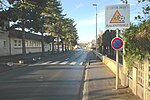Duchy of Normandy

The Duchy of Normandy grew out of the 911 Treaty of Saint-Clair-sur-Epte between King Charles III of West Francia and the Viking leader Rollo. The duchy was named for its inhabitants, the Normans. From 1066 until 1204, as a result of the Norman conquest of England, the dukes of Normandy were usually also kings of England, the only exceptions being Dukes Robert Curthose (1087–1106), Geoffrey Plantagenet (1144–1150), and Henry II (1150–1152), who became king of England in 1154. In 1202, Philip II of France declared Normandy forfeit to him and seized it by force of arms in 1204. It remained disputed territory until the Treaty of Paris of 1259, when the English sovereign ceded his claim except for the Channel Islands; i.e., the Bailiwicks of Guernsey and Jersey, and their dependencies (including Sark). In the Kingdom of France, the duchy was occasionally set apart as an appanage to be ruled by a member of the royal family. After 1469, however, it was permanently united to the royal domain, although the title was occasionally conferred as an honorific upon junior members of the royal family. The last French duke of Normandy in this sense was Louis-Charles, duke from 1785 to 1792. The title "Duke of Normandy" continues to be used in an informal manner in the Channel Islands, to refer to the monarch of the United Kingdom.
Excerpt from the Wikipedia article Duchy of Normandy (License: CC BY-SA 3.0, Authors, Images).Duchy of Normandy
D 562, Caen
Geographical coordinates (GPS) Address Nearby Places Show on map
Geographical coordinates (GPS)
| Latitude | Longitude |
|---|---|
| N 49.1333 ° | E -0.3667 ° |
Address
D 562
14123 Caen
Normandy, France
Open on Google Maps









